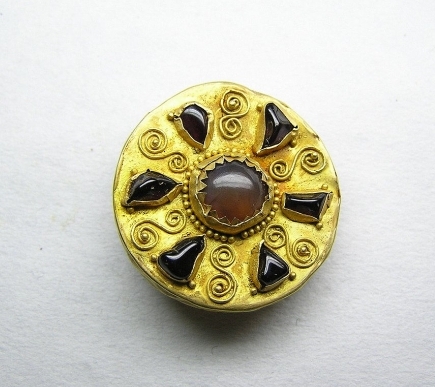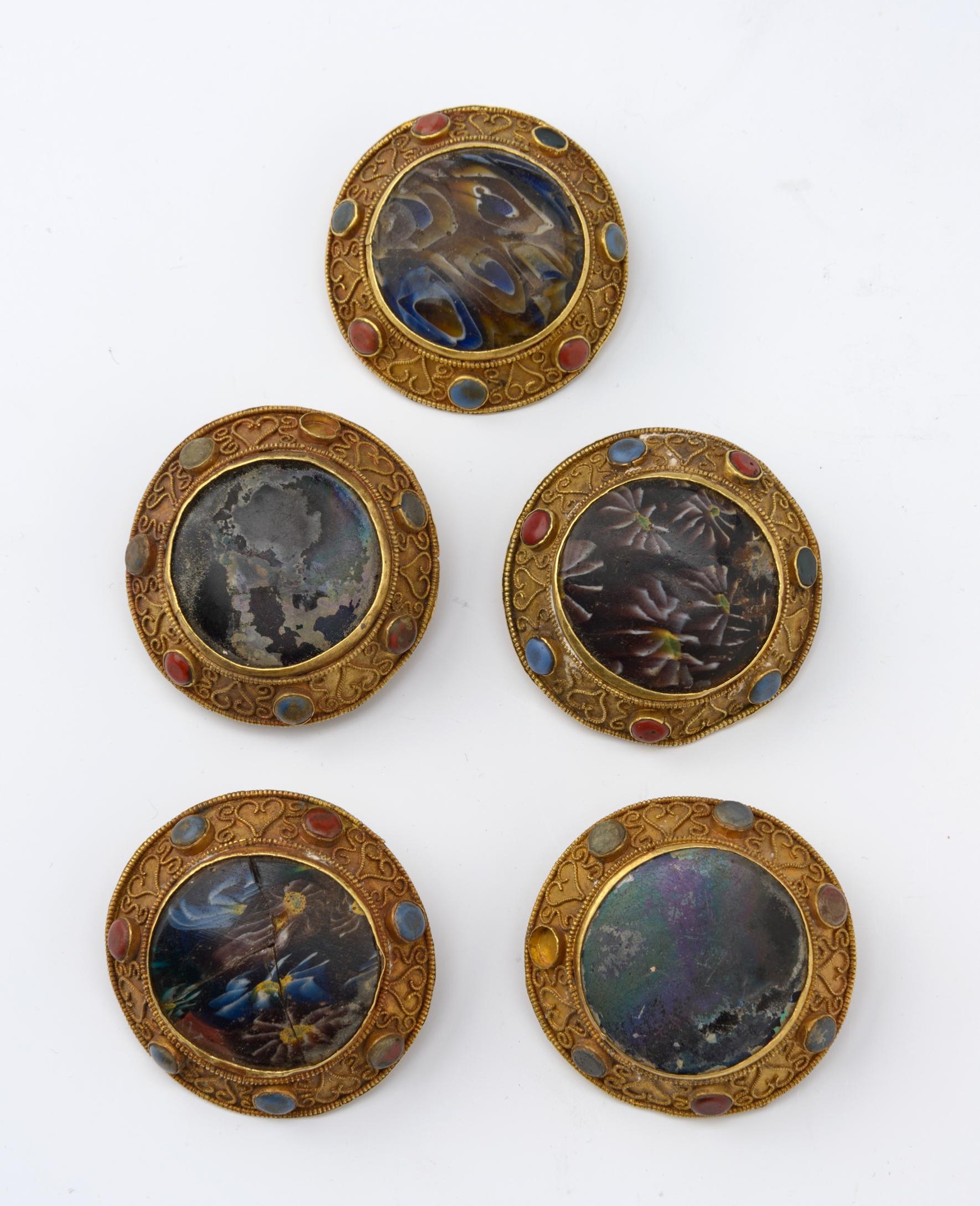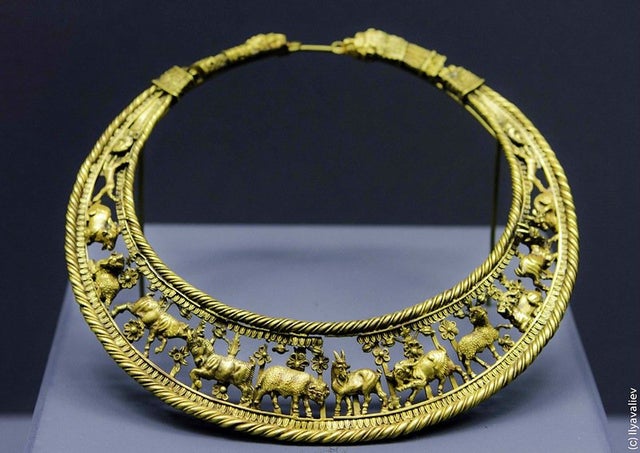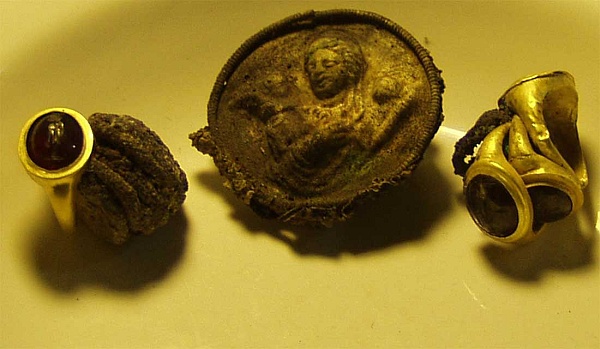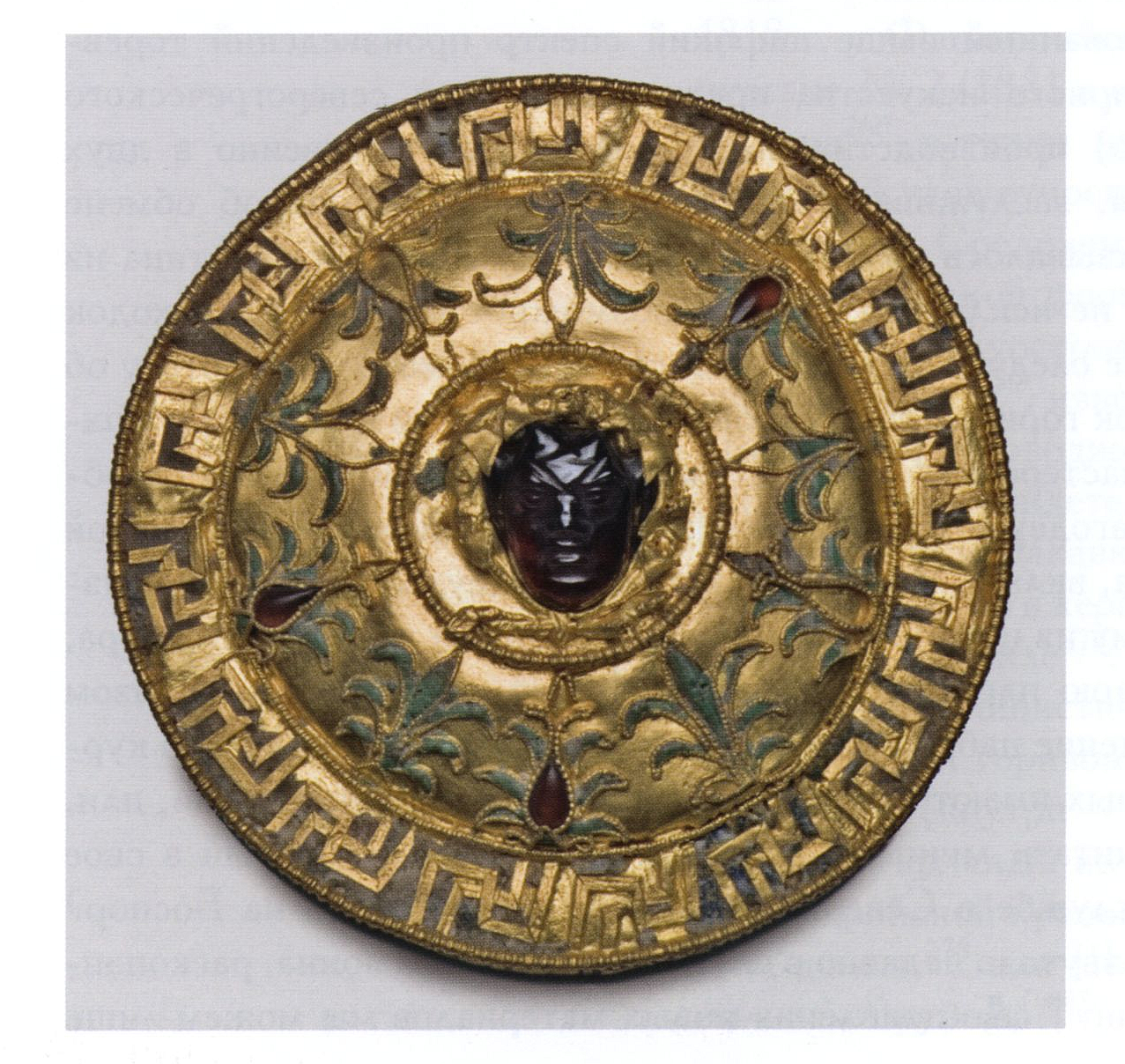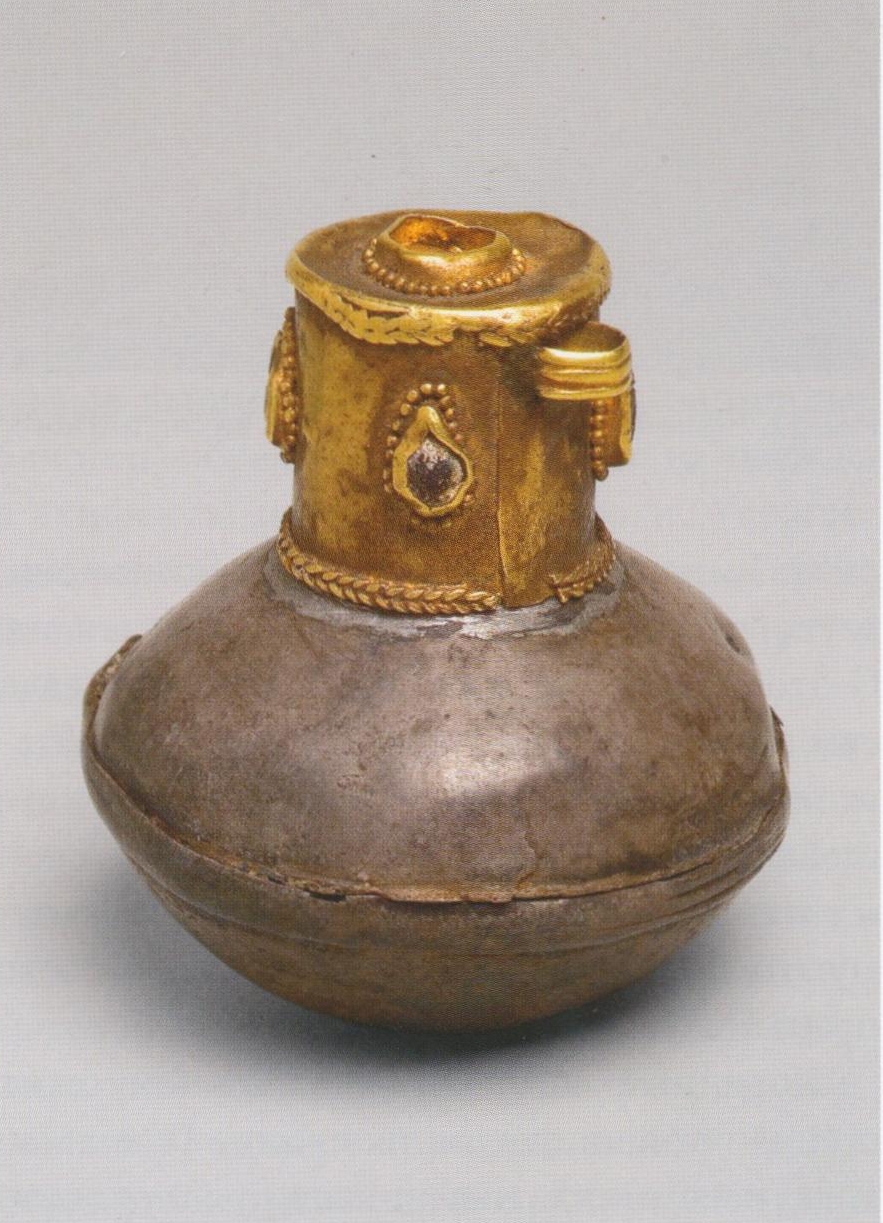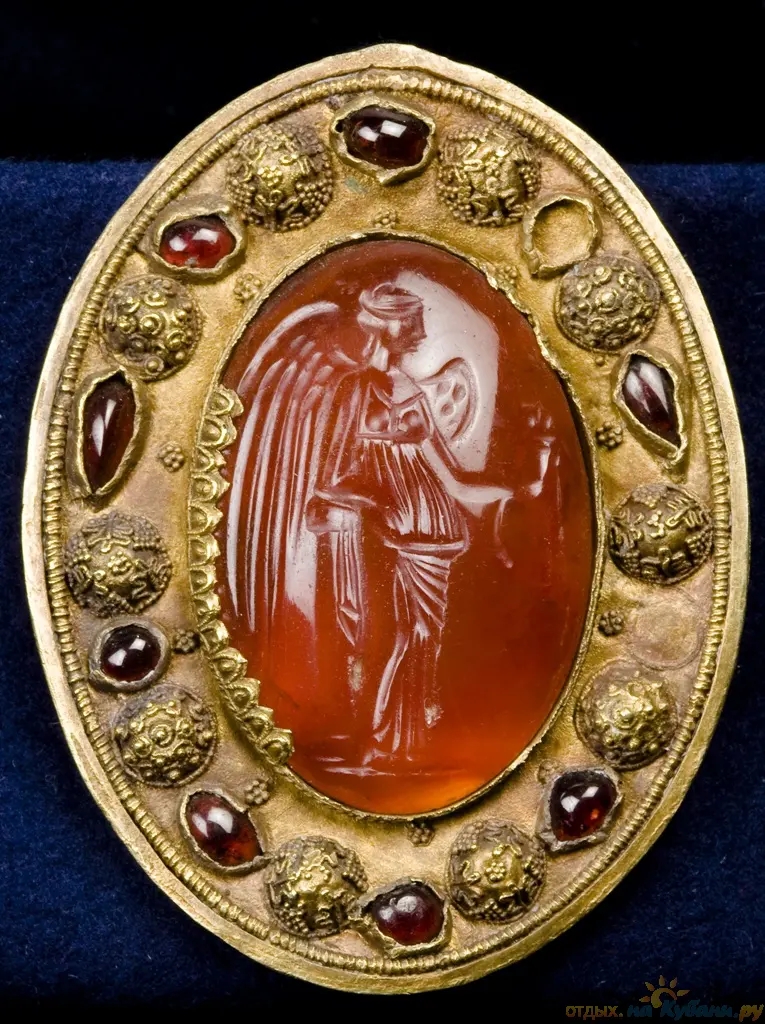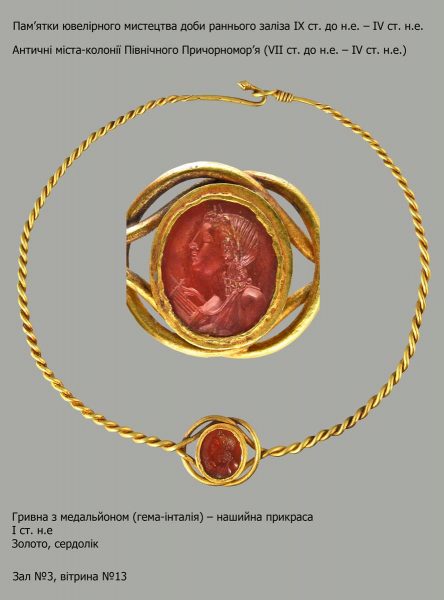
In 1953 the child burial located in a limestone cist was discovered on the site of the Kerch powerboat-fishing station. “Based on the location of the grave, it is assumed that it was situated within the boundaries of a 1st/2nd century CE cemetery that served the city of Panticapaeum in the Glinishche section of the modern city of Kerch”. [Joanna Porucznik]
The burial assemblage included a gold torque with a carnelian intaglio, elements of a necklace, a bracelet, a ring, and a glass jug.
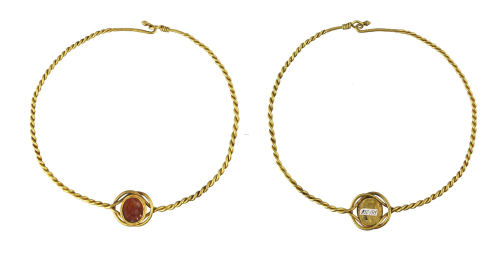
After Joanna Porucznik
“A torque made of twisted wires that form an open-worked “Herakles knot” in the center, decorated with a carnelian intaglio and featuring the head of a young man (Apollo?) in left-profile with a kithara.
Gold, carnelian.25 80.32 g; 164 × 170 mm; cast: 25 × 21 mm
stored in the NMHU Treasury Inv. No. AЗС—1719″ [Joanna Porucznik]
“it is a typically “Barbarian” piece of jewelry that symbolizes high status; however, it is decorated with a Greek “Herakles Knot” and an intaglio. An analogous piece depicting a “Herakles Knot” in the center, made using the same technique, comes from a male burial in a sarcophagus (crypt 2, sarcophagus 2 found in 1975 in Gorgippia (Treister 2003, pp. 45–46; Figure 11). There are no other attested objects similar to this type. Another well-known case of using a “Heracles knot” on torque is a decoration on the loop of a torque made of smooth, round wire from Chersonesus, dated to the second half of the 1st–2nd century CE.[…]
The carnelian intaglio decorated with an elegant head of Apollo in left profile with a kithara belongs to a series of images of Apollo dating to the late 1st century BCE /1st century CE” [Joanna Porucznik]]
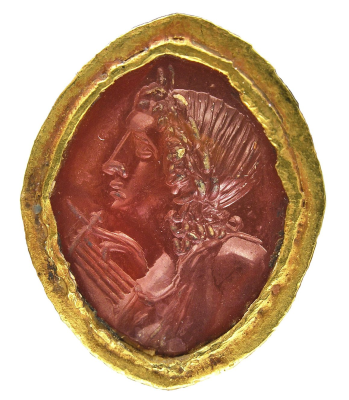
Photograph by Dmytro Klochko. © National Museum of the History of Ukraine
After Joanna Porucznik

- Gold necklace with cameo, grave IV, Tillya-Tepe, 2nd half of the 1st century CE; diam. 21 cm, cameo 4 x 3.5 x 0.7 cm. National Museum of Afganistan
- Gold necklace with carnelian cameo, Kerch, 1st century CE, 16.4 x 17 cm. Azov Museum [???]
- Detail of cameo in 8b
- Gold necklace, tomb II, sarcophagus II, Gorgippia, mid-2nd – 3rd century CE, diam. 17.8 cm.
Krasnodar Museum
- Joanna Porucznik, A Child Burial from Kerch: Mortuary Practices and Approaches to Child Mortality in the North Pontic Region between the 4th Century BCE and the 1st/2nd Century CE https://www.academia.edu
- Sara Peterson, Tillya-tepe Burials, overview https://www.academia.edu
- Treister, Michail. 2003. The Date and Significance of Tomb II at Gorgippia (1975 Excavations). Ancient Civilizations from Scythia to Siberia 9: 43–85

